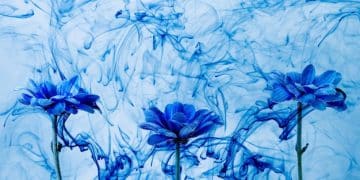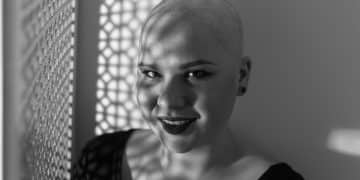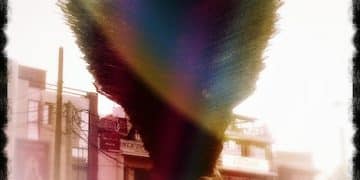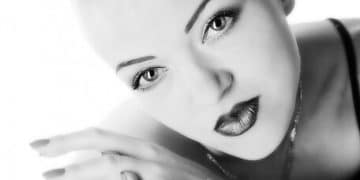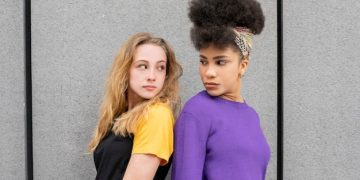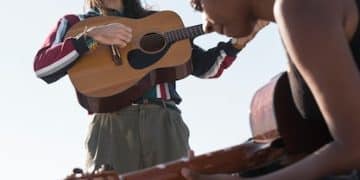US Alternative Photography 2025: 5 Photographers Unveiling the Unseen
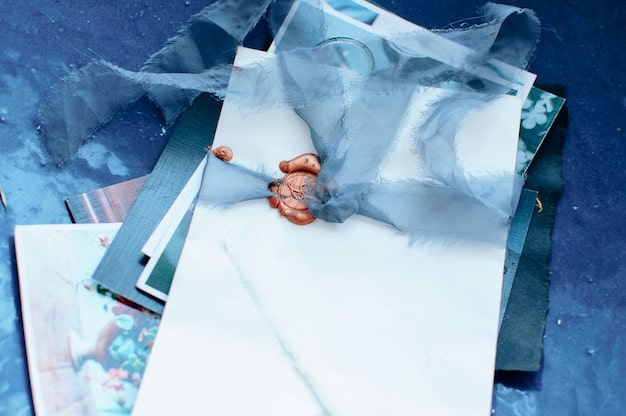
This article explores five leading photographers who, in 2025, are redefining US alternative photography, pushing boundaries with unique processes and capturing perspectives beyond the conventional photographic landscape.
In an era brimming with digital imagery, the allure of US alternative photography continues to captivate, offering a tangible connection to the craft and a unique visual language. This journey into the unseen reveals artists who challenge perceptions, using methods that are as compelling as their subjects.
The Enduring Allure of Alternative Processes
Alternative photography, far from being a niche pursuit, represents a vibrant, evolving landscape within the visual arts. It’s about breaking free from conventional digital norms, embracing processes that often date back to the 19th century, yet finding fresh, contemporary relevance.
The beauty of these techniques lies in their inherent unpredictability and the unique textures and tones they produce. Each print becomes an artifact, imbued with the artist’s hand and the nuances of light and chemicals. This tactile experience fosters a deeper engagement, both for the creator and the viewer.
Historical Roots, Modern Interpretations
From the delicate blue hues of cyanotypes to the rich, earthy tones of platinum-palladium prints, alternative processes are steeped in history. Yet, modern practitioners are not merely replicating the past; they are innovating, blending old techniques with new perspectives. This fusion allows for a rich tapestry of artistic expression.
- Cyanotype: A simple, non-silver process producing Prussian blue images, often used for cameraless prints or experimental portraits.
- Salt Print: One of the earliest photographic processes, yielding warm, rich brown tones, rediscovered and adapted by contemporary artists.
- Gum Bichromate: Known for its painterly qualities and wide range of colors, allowing artists to layer pigments for unique effects.
The re-emergence of darkroom culture and the growing interest in handmade processes reflect a desire for authenticity in an increasingly digital world. These methods offer a slower, more contemplative approach to image-making, emphasizing process as much as product.
This commitment to craft fosters a unique aesthetic, often characterized by subtle variations, imperfections, and a timeless quality that digital prints can rarely replicate. It’s a testament to the fact that innovation doesn’t always mean new technology; sometimes, it means reimagining the old.
Introducing the Visionaries: Five Photographers to Watch
As we navigate 2025, several US-based photographers are pushing the boundaries of alternative photography. Their work, diverse in its approaches and subject matter, shares a common thread: a profound dedication to revealing the unseen through unique visual narratives. They are not just using alternative processes; they are redefining what’s possible within them.
These artists demonstrate a mastery of their chosen mediums, often spending countless hours experimenting, refining, and perfecting their techniques. Their commitment to their craft transcends mere image capture; it delves into the very essence of artistic creation.
1. Elara Vance: The Alchemist of Light
Elara Vance, based in the Pacific Northwest, is renowned for her masterful use of the wet plate collodion process. Her haunting portraits and ethereal landscapes evoke a sense of timelessness, blurring the lines between memory and reality. Vance’s work is characterized by its stark contrasts and incredible detail, pushing the limits of this demanding 19th-century technique.
- Signature Style: High-contrast, deeply emotive portraits with an antique feel.
- Innovations: Experimentation with alternative light sources and tintype variations.
- Recent Work: A series exploring the forgotten narratives of derelict industrial spaces, each meticulously crafted as a unique plate.
Vance’s approach is methodical, almost scientific, yet the results are profoundly artistic. Each of her plates is an intense labor of love, revealing layers of texture and tone that a digital camera simply cannot replicate. Her subjects, whether people or places, gain a monumental presence through her lens.
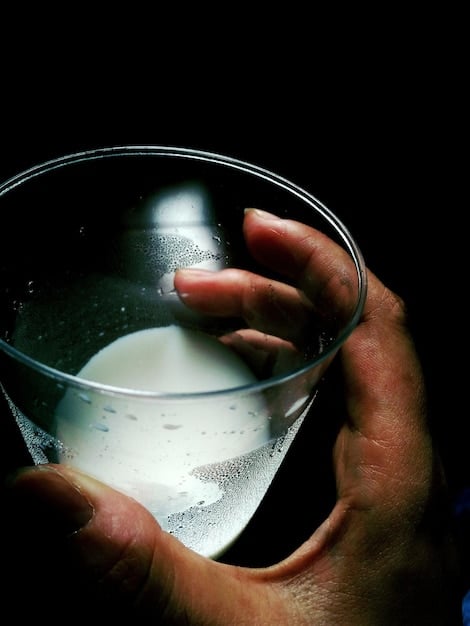
Her ability to imbue contemporary subjects with an antique sensibility sets her apart. Vance understands that the imperfections inherent in the wet plate process—the smudges, the occasional dust artifact—contribute to the unique character and narrative of each photograph.
2. Julian Thorne: Nature’s Abstract Cartographer
Julian Thorne, operating from his studio in the American Southwest, specializes in large-format cyanotypes and lumen prints that transform natural elements into abstract cartographies. Thorne’s work explores the intricate patterns and ephemeral beauty of the desert landscape, using sunlight and plant materials as his primary tools. His prints are often massive, inviting viewers to lose themselves in the subtle graduations of blue and brown.
Thorne’s process is deeply meditative, requiring patience and a keen observation of light. He often leaves materials exposed for days, sometimes weeks, allowing the sun to slowly burn its patterns onto the sensitized paper. The result is a series of unique, unreproducible images that speak to the raw power of nature.
Pioneering Lumen and Anthotype
Beyond cyanotypes, Thorne is a significant voice in the lumen print community, leveraging the direct action of sunlight on photographic paper without chemicals, producing nuanced sepia and magenta tones. He also ventures into anthotypes, using plant-based emulsions to create incredibly ephemeral, natural prints.
- Key Themes: Botanical studies, geological formations, and the interplay of light and shadow in arid environments.
- Exhibition Focus: Multi-panel installations that mimic natural landscapes, creating immersive experiences.
- Future Direction: Incorporating land art installations to interact directly with his photographic materials on site.
His dedication to eco-conscious practices is evident in his choice of materials and processes. Thorne views his work as a collaboration with nature, where the environment itself dictates much of the final aesthetic. This respectful approach shines through in the organic beauty of his images.
Thorne’s works are not just photographs; they are living documents of natural processes, each print a unique record of time and light. His art encourages a deeper appreciation for the micro-ecosystems often overlooked in the vastness of the American landscape.
3. Isabella Cruz: The Narrative of Memory
Isabella Cruz, a prolific photographer based in New Orleans, employs a diverse range of alternative processes, including gum bichromate and platinum-palladium, to construct evocative narratives around identity, memory, and heritage. Her work often delves into the complexities of cultural roots, blending historical archives with contemporary portraiture.
Cruz’s prints are characterized by their rich tonality, painterly quality, and layered imagery, creating a sense of history residing within each frame. She meticulously combines digital negatives with traditional emulsions, achieving a fusion of old and new that feels both familiar and strikingly original.
Blending Digital and Analog
What sets Cruz apart is her ability to seamlessly integrate modern digital techniques, such as scanning and image manipulation, with labor-intensive analog printing. This hybrid approach pushes the boundaries of what alternative photography can achieve, allowing for intricate compositions and complex visual storytelling.
- Main Subjects: Family heirlooms, historical figures reimagined, and cultural folklore.
- Process Mastery: Known for her layered gum bichromate prints, achieving incredible depth and color.
- Community Engagement: Active in workshops, teaching the nuances of hybrid analog processes to a new generation.
Cruz’s ability to imbue personal stories with universal resonance is a hallmark of her artistry. Her work invites viewers to reflect on their own histories, traditions, and the passage of time. Each photograph is a portal to a memory, real or imagined, that resonates deeply.
Her technical prowess is matched only by her artistic vision. Cruz’s dedication to traditional methods, while simultaneously embracing modern tools, positions her as a pivotal figure in bridging the gap between historical photographic practices and contemporary artistic expression.
4. Daunte Rivers: Urban Alchemy and the Invisible City
Daunte Rivers, based in Chicago, explores the urban landscape through chlorophyl prints and pinhole photography. His work reveals the often-overlooked textures, patterns, and stories embedded within city environments, presenting a nuanced view of the invisible lives and histories that inhabit concrete jungles.
Rivers’ chlorophyl prints, made by exposing leaves with negatives, offer an organic, ephemeral quality to his urban explorations. His pinhole photography, on the other hand, embraces long exposures and blurred movements, capturing the essence of city life as a series of fleeting moments.
Reimagining Urban Spaces
Rivers challenges viewers to reconsider their relationship with developed environments. His choice of alternative processes lends an organic, almost nostalgic filter to modern settings, forcing a deeper introspection into how these spaces evolve and exist over time.
- Technique Blend: Combination of large-format pinhole cameras and natural process printing.
- Artistic Purpose: Documenting decay, transformation, and the uncelebrated beauty of urban decay.
- Public Art: Often creates site-specific installations, using large-scale chlorophyl prints on public walls.
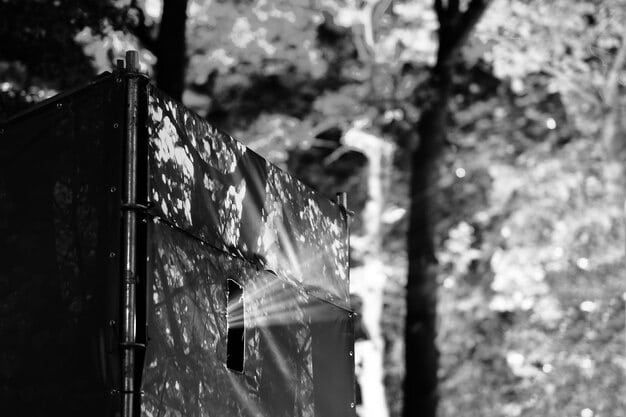
His work subtly critiques the rapid pace of urban development, advocating for a more mindful observation of our surroundings. The ethereal quality of his chlorophyl prints, especially, gives the harshness of concrete an unexpected softness.
Rivers’ unique perspective unearths the poetry in everyday urban scenes, transforming the mundane into profound observations. He reminds us that even in the most structured environments, nature finds a way to leave its mark, and art can expose these subtle interactions.
5. Anya Sharma: Exploring the Body and Beyond
Anya Sharma, a performance artist and photographer based in New York City, uses photograms and experimental darkroom manipulations to investigate themes of identity, embodiment, and the subjective experience of the human form. Her cameraless photographs are often abstract, revealing the unseen energies and contours of the body through light and shadow.
Sharma’s work is intensely personal, often involving her own body in the creation of the photograms. She extends the traditional photogram technique by incorporating movement, various light sources, and reactive chemicals, creating dynamic and gestural images.
The Art of Absence and Presence
Sharma’s pieces explore the paradox of absence and presence, where the subject is not literally depicted but inferred through the interaction of light and material. This approach allows for a universal interpretation of the human experience, transcending individual specifics.
- Primary Medium: Large-scale photograms and chemigrams on unusual substrates.
- Artistic Vision: Deconstructing traditional portraiture, focusing on energy, movement, and the ephemeral.
- Collaborations: Works with dancers and performance artists to capture motion blur and bodily form without a lens.
Her use of alternative prints often incorporates unusual materials as “negatives,” creating intricate patterns and textures that resemble organic forms or microscopic landscapes. Sharma’s approach challenges the very definition of a photograph, pushing it into the realm of conceptual art.
Through her innovative techniques, Sharma invites viewers to perceive the body not just as a physical entity, but as a site of energy, emotion, and transformation. Her work is a powerful testament to the expressive potential of alternative photographic processes.
The Future Landscape of Alternative Photography
The photographers highlighted here exemplify a broader trend in US alternative photography: a return to tactile, handmade processes that offer a distinct counterpoint to the ubiquity of digital images. This resurgence is driven by artists who seek deeper engagement with their materials, valuing the unique qualities and inherent unpredictability of analog techniques. As we look towards the future, several directions seem prominent.
There’s a growing emphasis on sustainability, with artists exploring natural dyes, plant-based emulsions, and less toxic darkroom practices. This eco-conscious approach not only aligns with broader environmental movements but also opens up new aesthetic possibilities, creating truly organic and ephemeral art.
Community and Education
The alternative photography community is thriving, with an increasing number of workshops, residencies, and online forums dedicated to sharing knowledge and fostering experimentation. This collaborative spirit ensures that these historical processes remain vibrant and accessible to new generations of artists.
- Increased Accessibility: More online resources and affordable starter kits for aspiring alternative photographers.
- Cross-disciplinary Integration: Alternative processes being explored in fashion, sculpture, and performance art.
- Technological Blending: Continued innovation in combining digital negatives with analog printing for hybrid outputs.
The beauty of this movement lies in its adaptability. While rooted in history, it constantly reinvents itself, leveraging contemporary tools and perspectives. The deliberate slowing down that traditional processes demand acts as a meditative counterpoint to the fast-paced digital world.
Ultimately, the future of alternative photography in the US looks bright, marked by innovation, community, and a profound appreciation for the artistic possibilities that arise when creators embrace both the seen and the unseen.
| Key Point | Brief Description |
|---|---|
| 🌟 Diverse Processes | Photographers use cyanotype, wet collodion, gum bichromate, and more, for unique visual effects. |
| 🎨 Artistic Innovation | Artists blend historical techniques with modern themes, creating contemporary narratives. |
| 🌱 Sustainable Practices | Growing interest in eco-friendly methods like plant-based emulsions and non-toxic darkroom processes. |
| 🤝 Community Growth | Workshops and online communities foster learning and collaboration in analog photography. |
Frequently Asked Questions About US Alternative Photography
▼
Alternative photography encompasses a range of historical non-silver photographic processes, such as cyanotype, platinum-palladium, and gum bichromate. Today, it’s defined by artists who use these traditional, often handmade, methods to create unique works that challenge conventional digital aesthetics, emphasizing craftsmanship and unique visual textures.
▼
Contemporary photographers innovate by blending digital and analog, using digital negatives for traditional prints, or by experimenting with new light sources and substrates not typically used historical processes. They also apply these older methods to modern subject matter, offering fresh perspectives on contemporary themes through a timeless lens.
▼
The resurgence stems from a desire for tactile, handmade art in an increasingly digital world. Artists and collectors value the unique, unpredictable qualities and the physical presence of alternative prints. It offers a slower, more meditative creative process and a durable, archival output that digital prints often lack.
▼
Some traditional alternative processes can use toxic chemicals. However, there’s a growing movement towards eco-friendly practices within this field. Photographers are increasingly exploring methods that use natural materials, like plant-based emulsions (anthotypes) or less harmful sensitizers, to reduce their environmental impact and align with sustainable art practices.
▼
You can discover US alternative photographers through dedicated art galleries, photography museums, and specialized online platforms focusing on analog and handmade photography. Many artists also offer workshops or online classes, providing hands-on opportunities to learn these unique processes. Art fairs and academic institutions often feature their work as well.
Conclusion
The landscape of US alternative photography in 2025 is a testament to the enduring power of handmade images and the innovative spirit of artists who are unafraid to challenge convention. The five photographers highlighted—Elara Vance, Julian Thorne, Isabella Cruz, Daunte Rivers, and Anya Sharma—represent a mere fraction of the talent pushing the boundaries of what photography can be. Their dedication to unique processes, their ability to imbue images with profound meaning, and their commitment to exploring the unseen solidify alternative photography’s vital place in contemporary art. As this field continues to evolve, it promises a rich tapestry of visual experiences, reminding us that true artistry often lies beyond the lens, in the very alchemy of light and material.
